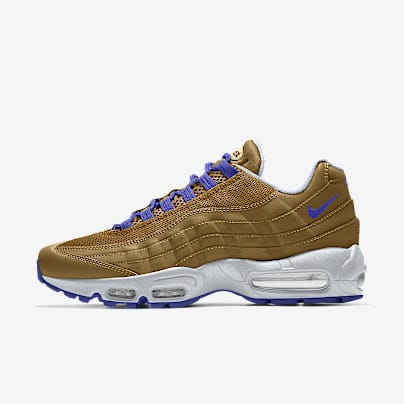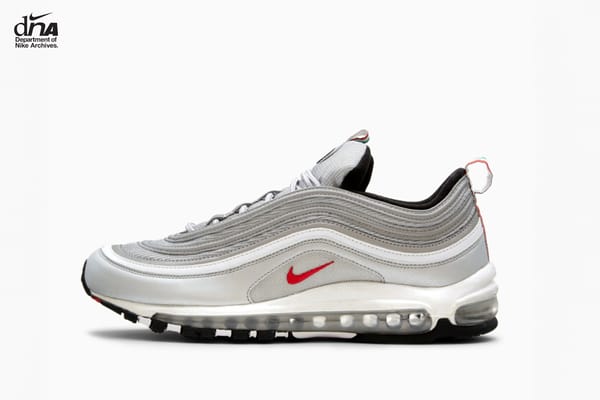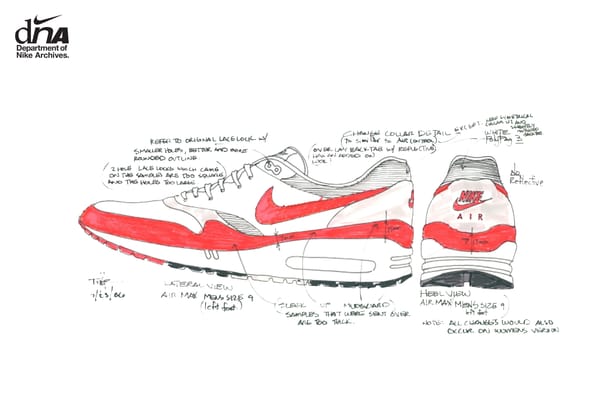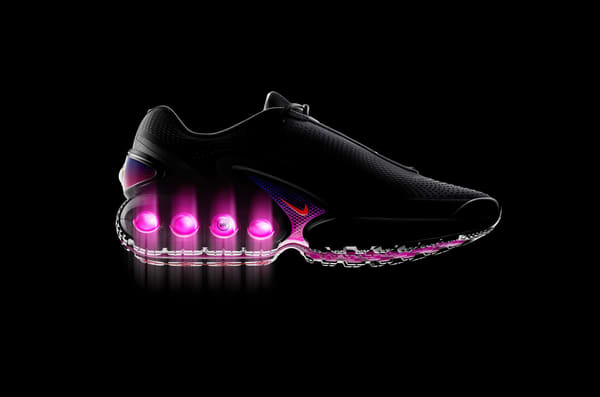The History of the Air Max 95
Department of Nike Archives
Details from the archives.

At first, the latest Air Max design hit resistance within Nike. It was unusual looking and featured the first-ever visible forefoot Air. Some loved the black midsole — the first time it was ever used in Nike running footwear — while others hated it. Which to designer Sergio Lozano, meant he was on to something.
The design was inspired by two distinct ideas. First, by the idea of a shoe that was created by nature, in which the layers of soil were eroded by rain, revealing the product. The second piece of inspiration was the complexity of the human body: the shank along the shoe’s outsole and heel represents the spine, serving as the backbone of the design. Nylon eyelets represent the ribs, and the lacing structure up the sides — layered with mesh — represents muscle fibers and flesh.
When it came time to launch the shoe in 1995, Nike matched the branding and coloring of the box to the shoe, particularly the signature neon from the sneaker's airbags and lace loops, as well as the black outsole. Ultimately, the shoe was praised for its style, comfort and innovation. Being a first-of-its-kind running shoe with visible forefoot Air, the cushioning system offered runners more comfort and support with dual Air units.
Today, nearly 30 years later, the Air Max 95 remains a beloved sneaker staple in the Air Max family. Looking to cop a pair? Check out the latest styles below.









